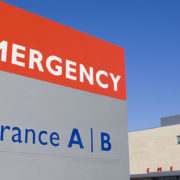Diabetes: Know the Warning Signs
World Diabetes Day is dedicated to increasing awareness and education about the escalating health threat posed by diabetes. Knowing the warning signs and risk factors associated with diabetes is important in preventing this disease which affects more than 380 million people worldwide.
Early detection and ongoing disease management can make a real difference for a patient’s quality of life. That’s why US Family Health Plan (USFHP) is committed to providing our members with the resources and information they need to maintain healthy lifestyles and help prevent the development of costly chronic diseases like diabetes.
USFHP offers a comprehensive network of health education and care management programs, as well as chronic disease programs that can help members manage and improve their health. For instance, Diabetes at Work—a National Diabetes Education Program created by the Department of Health and Human Services—is a customized five-week program that helps patients develop a better understanding of what diabetes is, while teaching them how to stay healthy through physical activity and proper nutrition. USFHP members can also take advantage of the Diabetes Conversation Mapping Program, a four-week interactive course designed to engage small groups of people with diabetes in an open discussion about their condition.
USFHP member Linda Gallentine believed she could manage her diabetes without the help of a doctor. But when a physical exam and blood test revealed that Gallentine’s blood sugar had spiked, and she also had high cholesterol, she started on medication and enrolled in a diabetes education class that would change her life. Today, Gallentine has fully embraced the lessons taught in her diabetes education classes at Johns Hopkins Community Physicians. By changing her family’s diet and exercise habits, she has lost about 50 pounds and lowered her blood sugar significantly.
“Dr. Feeser keeps me accountable,” said Gallentine. “Without him keeping such good track of my care, I would not have been as successful.”
USFHP is proud to offer America’s military families the best doctors, many of whom are recognized by the National Committee on Quality Assurance (NCQA) for Excellence in Diabetes Care. By working collaboratively with our members and providing leading programs, we are committed to preventing and reducing episodes of expensive chronic care. Click here to learn more about the network of wellness programs available to our beneficiaries.












